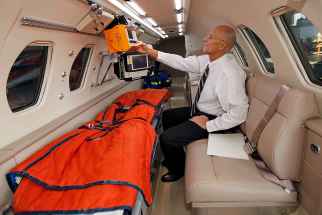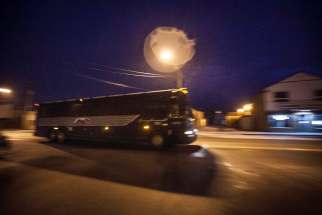The last ride Writer Melissa Martin and photographer Phil Hossack hop aboard for Greyhound's final run from Flin Flon to Winnipeg, a 900-kilometre journey that served as a lifeline to more than three dozen rural Manitoba communities for decades
Read this article for free:
or
Already have an account? Log in here »
To continue reading, please subscribe:
Monthly Digital Subscription
$0 for the first 4 weeks*
- Enjoy unlimited reading on winnipegfreepress.com
- Read the E-Edition, our digital replica newspaper
- Access News Break, our award-winning app
- Play interactive puzzles
*No charge for 4 weeks then price increases to the regular rate of $19.00 plus GST every four weeks. Offer available to new and qualified returning subscribers only. Cancel any time.
Monthly Digital Subscription
$4.75/week*
- Enjoy unlimited reading on winnipegfreepress.com
- Read the E-Edition, our digital replica newspaper
- Access News Break, our award-winning app
- Play interactive puzzles
*Billed as $19 plus GST every four weeks. Cancel any time.
To continue reading, please subscribe:
Add Free Press access to your Brandon Sun subscription for only an additional
$1 for the first 4 weeks*
*Your next subscription payment will increase by $1.00 and you will be charged $16.99 plus GST for four weeks. After four weeks, your payment will increase to $23.99 plus GST every four weeks.
Read unlimited articles for free today:
or
Already have an account? Log in here »
Hey there, time traveller!
This article was published 02/11/2018 (2598 days ago), so information in it may no longer be current.
CREIGHTON, Sask. — Headlights peer through the snow, illuminating this quiet stretch of road, just across the Saskatchewan border from Flin Flon and mostly indivisible from it. The bus rumbles up the street, right on time.
Under the eaves of Coutts Convenience Centre, which serves as Flin Flon’s Greyhound station, a clutch of passengers stands waiting. They trickled in over the last 30 minutes, bags in hand, cheeks bright in the cold.
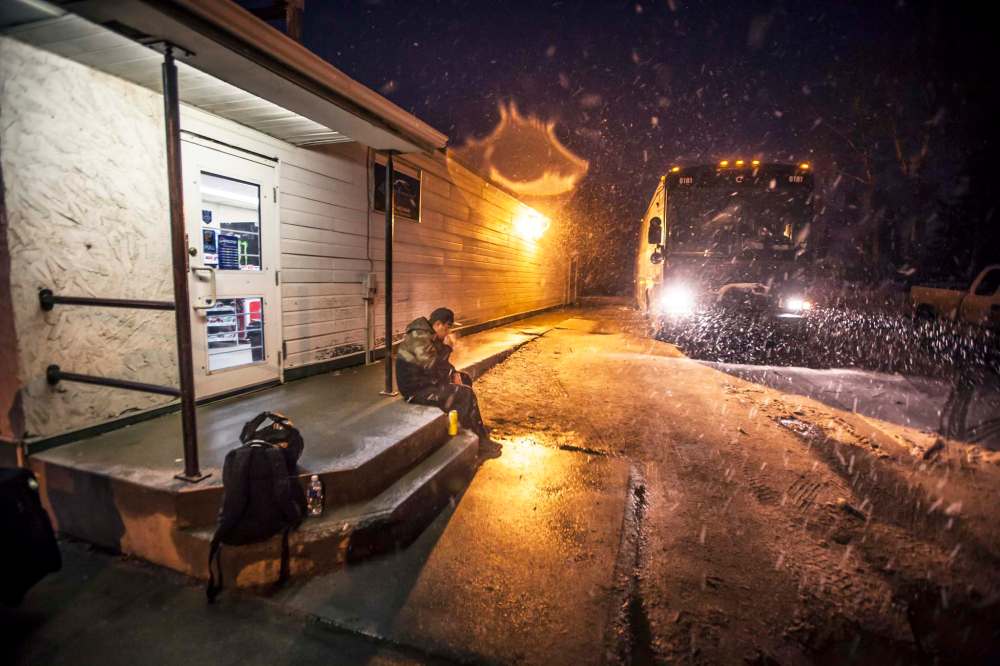
The bus rounds the corner and sighs as it comes to a stop. Its door swings open and the driver hops off. He has bright eyes and close-cropped grey hair. A patch sewn to his uniform commemorates his years behind the wheel.
“Where you headed?” he asks the huddled group cheerfully.
His name is Doug Stern and he knows this routine well. He is 67 years old, and has been driving Greyhound buses for 43 years, most of those making the same run between Winnipeg and Flin Flon, nearly 900 kilometres each way.
Outside the bus, he reviews his passenger list. There are six of them leaving Flin Flon tonight, an average load for this stop. More will climb aboard as the bus rolls further south — though tonight, as on most nights, it will not be full.
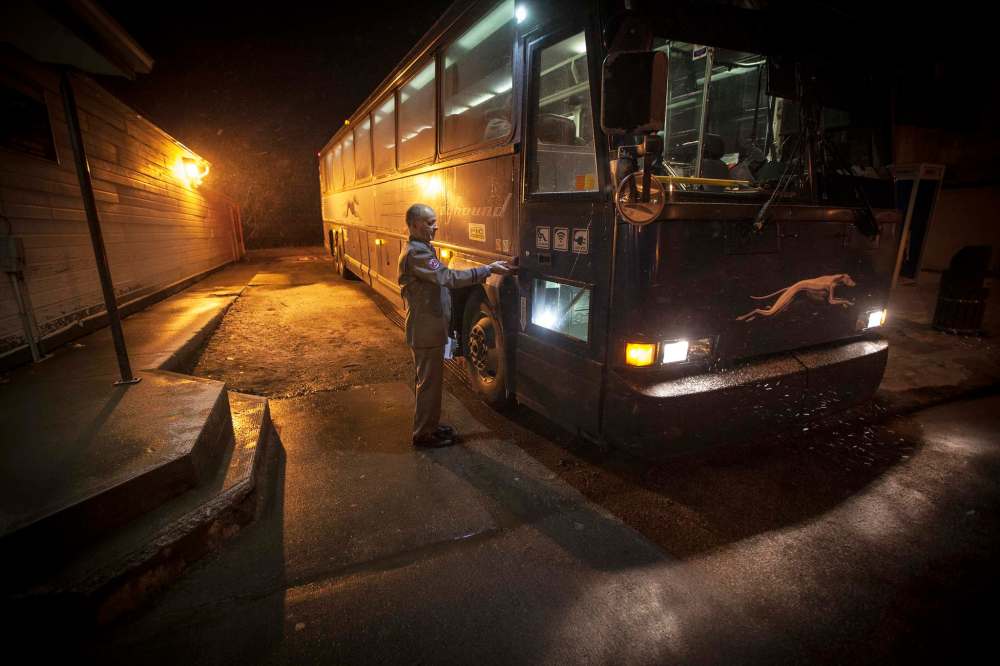
Every passenger has a story. There are two young men going home to Winnipeg after visiting a friend; Lisa La Rosa has the same story but with her son; and Justin Spence is making his way home to Nelson House for the first time in two years.
Spence will only be on the bus for a couple of hours. He’ll get off at The Pas, where he’ll board a 10-hour train to Thompson. From there he’ll catch a ride to Nelson House, where his mother is buried. He wants to see her grave.
Out here, in the vast northern reaches of Manitoba, so much of life’s rhythms are tied up by transportation.
It’s a chilly night, and driver Stern lingers in the convenience store waiting for the time to push off. He quips that maybe tonight it would be OK to leave early; he’s only joking. On his watch, the bus will always leave on time.
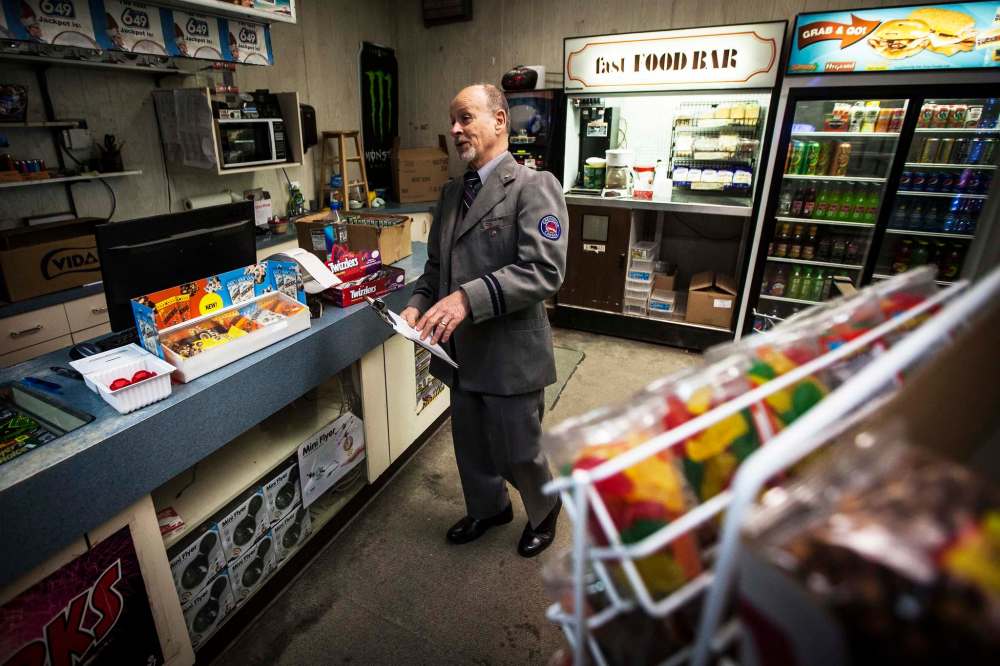
The convenience store phone rings, and the owner picks up. A woman from Neepawa is calling, he tells Stern. She wants to know if the bus is leaving Flin Flon as planned, so she can hop aboard when it stops in her town at 4 a.m.
Stern laughs. It’s coming, he says, and he looks at his watch — it is 7:27 p.m. The driver turns to head out the door. Before he goes, he turns back to the store owner. The two men stretch their arms to clasp hands, a final farewell.
“Nice working with you,” Stern says. “Good luck.”
This is the last Greyhound bus out of Flin Flon. In a matter of hours, the company will cease its prairie province routes forever. For 83 years, the bus line built a web across Manitoba; now, it will vanish with the morning dew.
The goodbyes are done. It is time to move on. On the bus, Stern climbs into the driver’s seat, makes a few final checks, flicks the inside lights off. The bus engines growl as they turn, and the vehicle lurches toward the street.
The Flin Flon-Winnipeg run

It will take just under 12 hours for this bus to reach Winnipeg. Along the way, it will pass through more than three dozen outposts of rural life, scattered over boreal shield and boreal plain and, at last, the flat expanse of prairie.
The names of the stops will run together as the bus rolls, a blur of Manitoba: Wanless. Minitonas. Pine River. McCreary.
When it at last reaches Winnipeg, it will herald the end of a network that long strung lifelines into small communities, giving people low-cost ways to get in and out. In its wake, a patchwork of small bus lines will try to shoulder the load.
Whether those efforts will succeed — and what will happen if they don’t — only time will tell.
For now, at the beginning of this end, Stern guides the bus towards the highway. The lights of Flin Flon fall away, muted by the damp snow that drifts over the city. This may be his last trip, but the routine of it will stay the same.
“If you find the temperature too warm or too hot, let me know,” he tells the passengers over the bus speakers. “And this will be my final trip, so I’d like to wish everyone happy trails, and thank you for travelling Greyhound Bus Lines.”
● ● ●
The roads get rougher. The ditches grow wilder. The lights of homesteads become more thinly spaced, until they prick the night’s blue-black shawl in rare twinkling bunches. A signal, a reminder: there is still someone out there.
To understand the vastness of Western Canada, maybe you have to ride the bus at least once.
The land spreads out before you, a void of space and time, time and space. At home, in the city, there is never enough of either; but out here, confined to the demands of a drive yet freed from its labour, there is nothing else.
The place you left is long gone. The place you are going to is still far away. When the cell service drops out, you try to read, to sleep. Try to find thoughts electric enough to ignite the suddenly still machinery of an overstimulated mind.
Out the window, your eyes trace the tops of shaggy pines, silhouetted against the lesser dark of the sky.
You learn by heart the leitmotifs of bus music: wheels on pavement, the rumbling bass of the engine, the percussive wheeze of air belching from mechanical systems. The windy shriek of vehicles zooming by in the opposite direction.
This is your life for the next 12 hours. Nothing to do but surrender to the bus. In truth, it doesn’t ask very much.
● ● ●
Scratch the surface of any issue hard enough, and the story of Western and Northern Canada is, always, a story of connection and disconnection. To thrive here, communities must strike a constant balancing act between belonging and isolation.
On the most basic possible level, that is a matter of transportation. Across the north, communities are described by how they connect: places you can reach by car, by train, by plane, by some combination of the above or just by one.
Residents are always conscious of these fragile connections. On Wednesday night, hours after the last Greyhound buses crossed Manitoba, people in Churchill cheered as they heard a train’s whistle for the first time in 17 months.
And Flin Flon, though not so remote as Churchill, holds that same story in its bones. Over a century ago, prospectors trekked into the region, setting up camps and scraping out a meagre existence from its beautiful but daunting terrain.
“I try to visualize how they even got here, tromping through the bush,” says Ken Pawlachuk, a city councillor. “There was no railroad, and the road ended somewhere around the Perimeter Highway of Winnipeg. But they got here.”
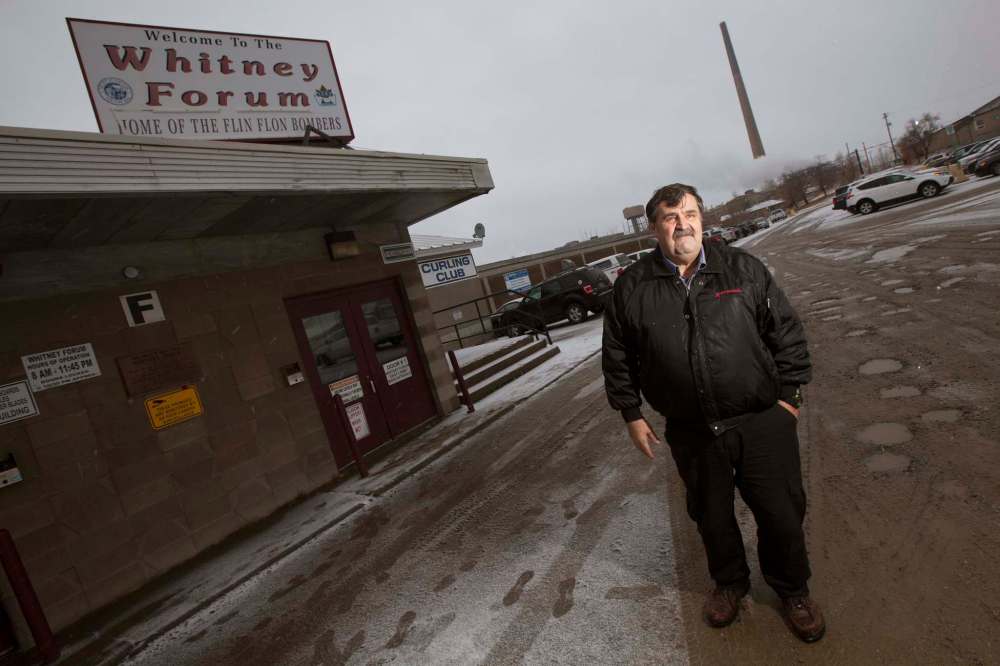
One day, a Metis trapper named David Collins asked prospector Tom Creighton to identify some shiny rocks he’d found in a nearby lake. That led to the discovery of a vast trove of copper and zinc that is still mined there today.
From the start, getting people and goods to and from Flin Flon was a constant challenge. Engineers devised ways to build a railroad through an inhospitable maze of muskeg and rock; frozen solid in winter, boggy after the thaws came.
In the winter of 1927-28, they started construction on the railroad that would give Flin Flon its life. The tracks were first laid on frozen ground, with crews going back to shore them up after they sank into the soggy ground in spring.
Still, the land fought the connection. Vast sinkholes gaped under the trestles, leaving tracks suspended in mid-air. Some nights, crews worked round-the-clock, dumping gravel into the bottomless pits that yawned from the earth.
Incredibly, despite these obstacles, the railroad was completed in just nine months.

These travails are never far from Flin Flon’s collective memory. Near the city’s famous statue of its fictional namesake, Flintabbatey Flonatin, there is an outdoor museum of weathered old transportation equipment.
Behind a thin fence sits an old Linn Tractor sled, which crawled along frozen lakes at just three miles an hour. In 1928, those tractors hauled 29,000 tons of freight to build a dam north of Flin Flon; they stayed in use until 1952.
One by one, new connections came to Flin Flon, and with each one, the city blossomed. Even today, a resident sometimes scrutinizes a photo, hunting for a date, and then finally says: “that must have been before the road.”
The Road, in this case, is Provincial Trunk Highway 10. It reached Flin Flon in 1952, with an optimistic ribbon-cutting ceremony. To this day, Flin Flon remains the terminus, the last community connected on Manitoba’s northwest side.
Pawlachuk was just two years old when the road opened. But he remembers when the highway was still just a narrow ribbon of gravel; back then, he says, it took about four hours to make the 140-kilometre trip to The Pas.
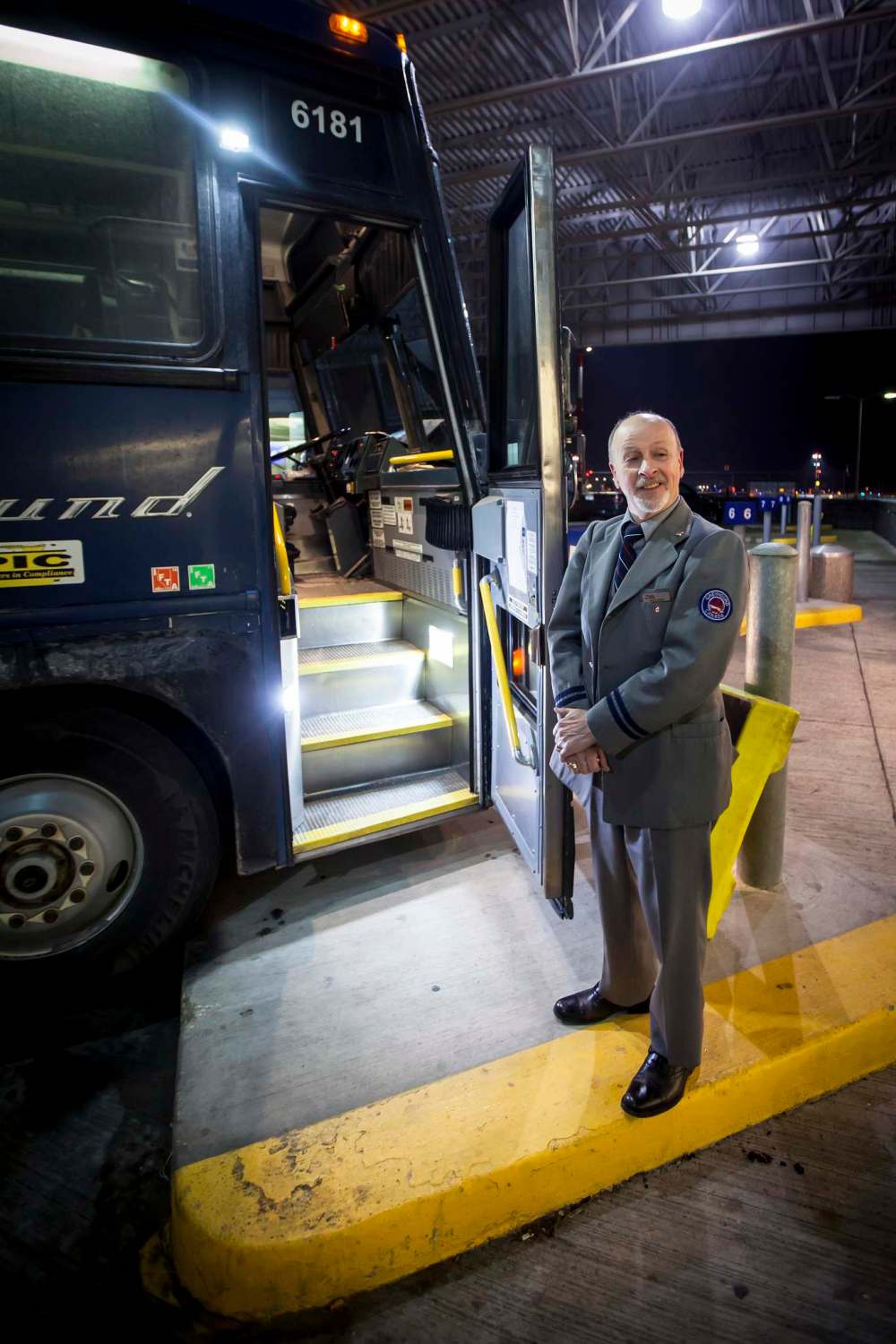
Still, that road paved the way for Flin Flon to flourish. Bus service moved in not long after the road was built; business followed. At its peak, in the 1960s, the city reached about 15,000 people; today, it’s settled at 5,000.
Even after the road, Flin Flon’s history of isolation left a lasting mark on the community. In the early days of the mine, the Hudson Bay Mining and Smelting Company tried to keep workers happy, promoting recreation and entertainment.
Decades later, that legacy lives on. Despite its size, Flin Flon is one of the most artistically vibrant communities in Manitoba, bustling with music festivals and artist collectives; every two years, residents stage a dazzling musical.
Last year, it was Grease. Next spring, they’re doing Mamma Mia. Tickets to the performances sell out every year.
So it’s a balancing act, for remote communities. They can thrive when left to their own devices, making space to create culture. But to survive, to keep daily life and business running, they need steady links to the world outside.
For a time, it was Greyhound that provided communities like Flin Flon this connection. Its routes saturated the north and the west, penetrating into communities where little else went, a reliably low-cost passage to the rest of the world.

It’s not just about moving people. In major cities like Winnipeg, where the flow of goods is a steady spigot, the logistics of transporting stuff is rarely given much public thought. But in Flin Flon, steady freight service is vital.
Every day, the Greyhound brought in a trailer full of freight. Lawyers’ documents. Car parts. Medical equipment shipped in from the city. Sometimes, passengers would board to find the front seat filled by a shipment of flowers.
“A lot of local businesses rely on that,” Pawlachuk says. “The freight does compensate the low ridership.”
Folks around here already know what can happen, when those options are taken away.
In May 2017, Saskatchewan shut down its publicly owned bus company. Private companies moved in to take over some routes, but others went unfilled. After that closure, Creighton was left without a bus connection to its province.
A private business stepped in to handle some of the freight, working long hours ferrying shipments to and from Saskatoon. Other residents and businesses moved their shipping to Greyhound, which ran up from Winnipeg.
“For things like water testing samples, they had to now find a different place to send it,” says Sandra Schroeder, a Creighton resident. “Like to Winnipeg, because they had the bus. I don’t know what either town is going to do now.”
Schroeder knows how important the Greyhound is to Flin Flon, as well as anyone there. In 2008, with two young children at home, she was diagnosed with breast cancer. With family in Winnipeg, she chose there for treatment.
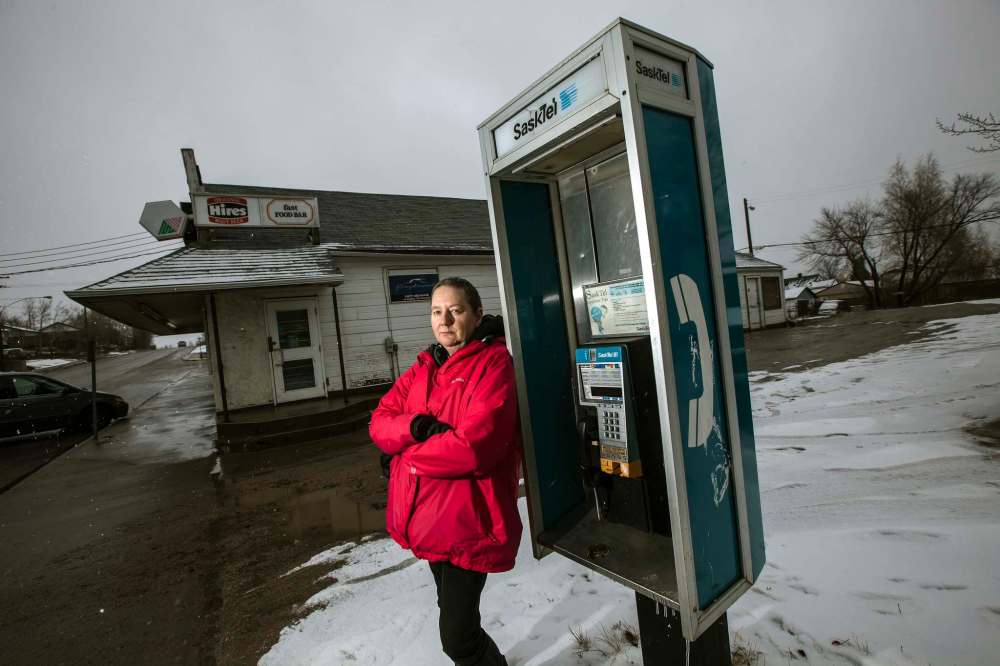
The bus became her lifeline. The year she was diagnosed, she rode the Greyhound to Winnipeg eight times for medical appointments; more recently, she took it once or twice a year to monitor her health with doctors in the city.
On her most recent visit, in July, she was officially discharged by her oncologist. Looking back now, she says, she can’t imagine how difficult it would have been, were it not for the bus; she avoids flying due to another condition.
Now, Schroeder worries about what the collapse of Greyhound’s routes could mean for others.
It’s still hard to get out of Flin Flon, if you can’t drive yourself. Flights are expensive; short-notice flights to Winnipeg can cost $1,700. By contrast, even a last-minute round-trip bus from Flin Flon to Winnipeg totalled to a bargain $230.
What that means, is that many of the folks left riding the bus are those who most need it. In the northern reaches of Manitoba, most long-haul bus riders are Indigenous. Many are elders, headed to visit family or doctors in the big city.
For them — and for young men heading out in search of work, or women looking to escape an abusive home — a crumbling bus service means that, unless one can find a car ride, there is no affordable way to get in or get out.
“It’s vital, for places like ours,” Schroeder says. “With mining towns, you end up with a lot of the extremes. Mines, they’re good-paying jobs. Health care is good paying jobs.
“But then you’ve got all the outlying First Nation communities, and this is their only form of transportation. It’s going to leave a lot more people more vulnerable.”
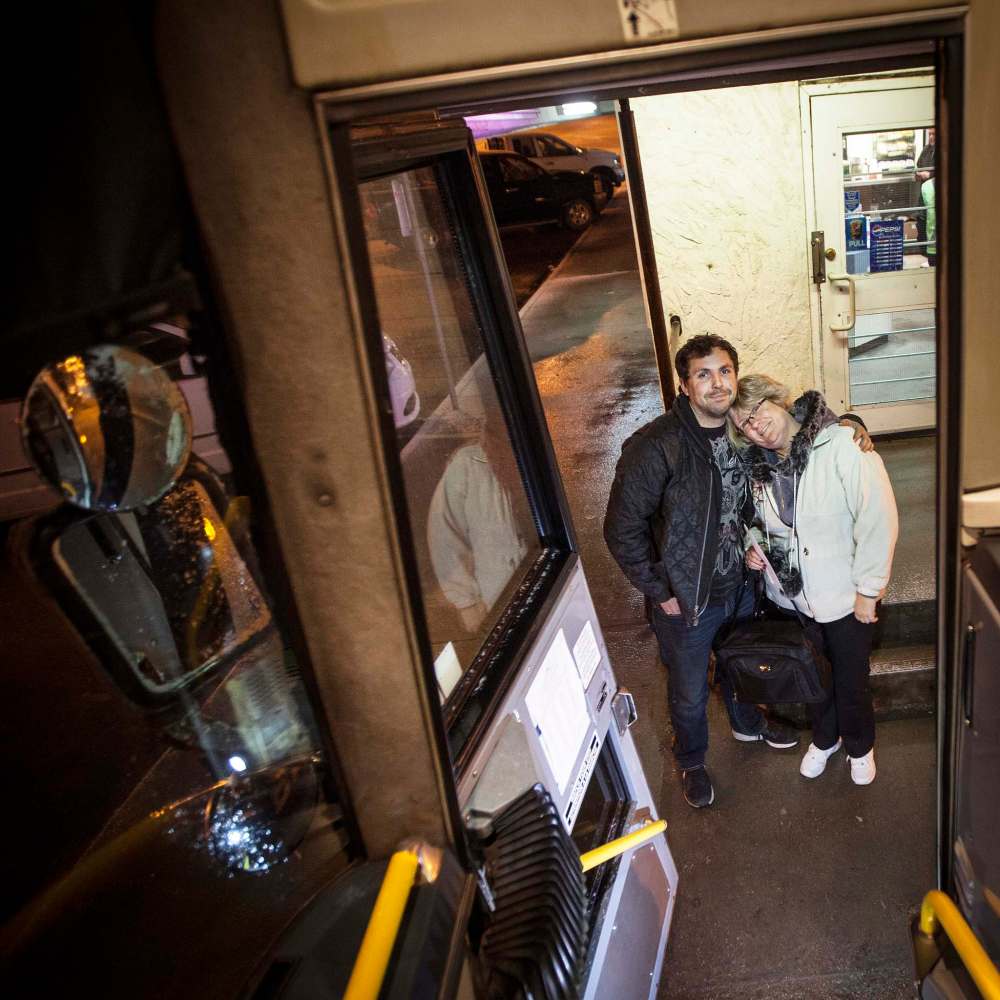
Besides, the Greyhound was there for Flin Flon when air travel couldn’t hack it. Last week, just days before his final run, driver Stern got a call to pick up 10 passengers stranded at the Flin Flon airport, a 20-km drive outside the city.
Planes couldn’t get out in snowy weather; in Flin Flon’s small airport, they can’t land in poor visibility either.
But the bus could soldier on where planes wouldn’t dare. And so, even as ridership dwindled over the last 15 years, it kept going. Kept picking up people who needed a way out of Flin Flon, or a way in, and carrying them forward.
Those people aren’t going anywhere, just because the Greyhound collapsed.
“People are coming into the city on the bus, and leaving the city on the bus,” Pawlachuk says. “What are they going to do now? I don’t know.”
● ● ●
You fell asleep somewhere between who-knows and wherever. You woke up two hours and a couple hundred kilometres later. In the darkness, you squint to make out changes in the terrain, so as to judge your progress.
By now, a few hours into the journey, you’ve learned the bus’s quirks. There are the power outlets that don’t work. The bathroom door with the questionably functioning lock. A man two rows ahead with a nagging, phlegmy cough.
You wonder if other passengers notice similar little things about you. The way you sniff, bite your nails, move.
It’s OK if they do; the bus is democratic. There is no first class. No seat better than the rest, unless one prefers leaning into the window, which rattles your neck, or the aisle, where you’re jostled by people shuffling to the back.
There are few rules about how to sit, so bodies jumble to rest however they can. Short people curl up in the fetal position, wadding their parka for a pillow; taller folks stretch their legs across the aisle, a mattress of vacant space.
Some nights, drivers search for people gone missing on head counts, and find them fast asleep under the seats.
Maybe those shapes are the essence of the long-haul Canadian bus, its most definitive cargo: a handful of bodies tossing restless, caught in suspended animation. All the same, no matter who they are, or where they came from.
This is Canada, unvarnished. It may not be the most glamorous way to travel. But in a way, it’s the most honest.
● ● ●
At Greyhound, drivers started to see the writing on the wall, as the company slashed routes across Manitoba. Still, when the company announced in July that it would shutter its operation for the Prairie provinces, the finality was shocking.
“We never thought it would come to an end,” Stern says. “But the fact of the matter is, people are not riding anymore.”
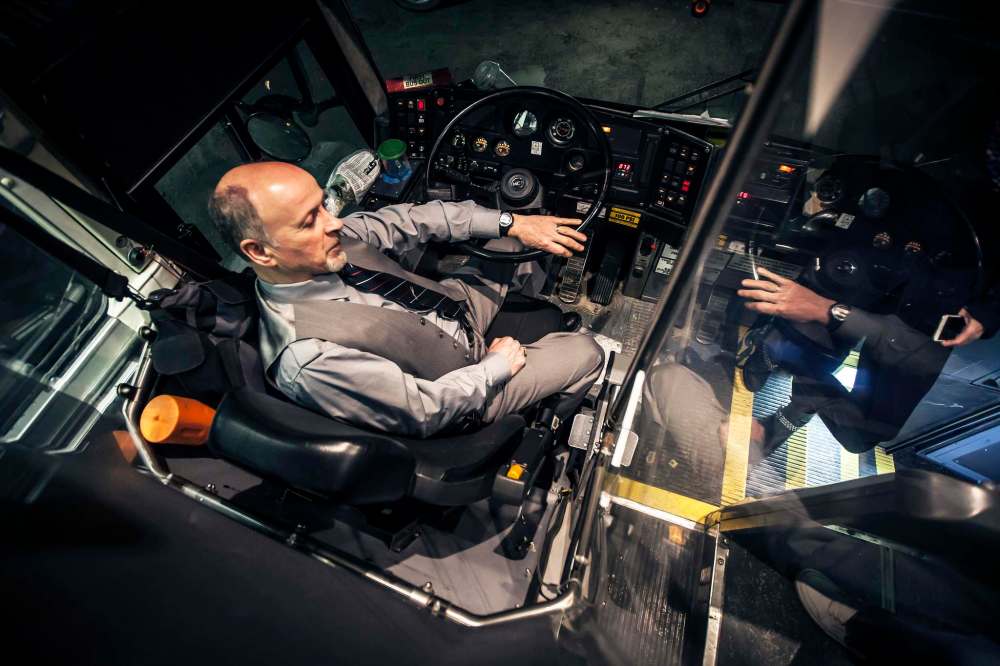
Drivers knew ridership had been plummeting for years. There could be a multitude of factors: more people own cars. Some rural communities are shrinking. More First Nations started operating their own medical transportation.
In the “good old days,” driver Stern says, at the peak of its service, the company had more than 130 drivers in Manitoba alone. They were stationed across the province, with drivers working out of Winnipeg, Brandon and Thompson.
Greyhound was a good place to work back then, he says, with a “really good atmosphere,” and a jovial camaraderie among drivers. In those days, there were many runs to choose from, including three trips every day north to Flin Flon.
That Winnipeg-Flin Flon day run was prized among drivers. It was 12 hours each way, which meant drivers squeezed a week’s worth of work into just two days. So you’d drive there, stay a night, come back, and be off for three days.
At one point, the route was so popular that a driver needed around 25 years of seniority to have a chance at it.
“I was lucky,” Stern says. “I got on it in the good old days when we had three runs, so I was able to snag it.”
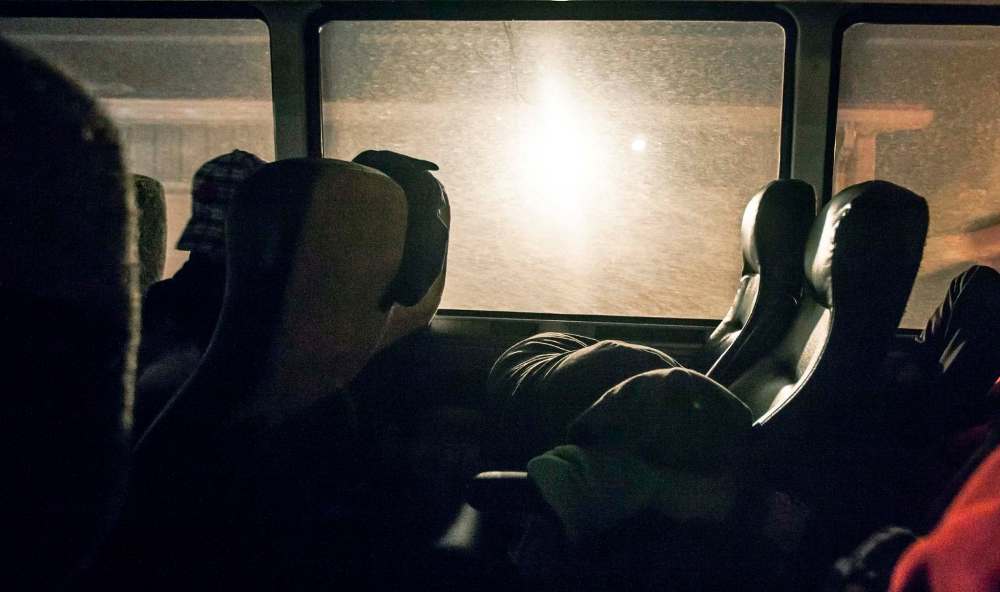
He would make that run for the next 27 years. Once, his dentist asked if he ever got bored, driving the same route every day. Stern just laughed, and fired a question back: did the dentist ever get bored just drilling teeth every day?
Truth is, he says, the day run to Flin Flon was pleasant. He had regular passengers, who he’d chat with for hours; Schroeder was one of them. He enjoyed watching flowers bloom in the spring, and animals dart through the trees.
But already, the end was looming. In 2012, at a meeting with municipal and health authorities from across Manitoba, Greyhound executives broke the news that they couldn’t keep the northern runs going without more assistance.
Manitoba had started subsidizing the northern routes after Greyhound threatened to cut service in 2009. Over the next three years, the province kicked in $8.4 million, and changed transportation rules to invite more competition.
But now, the province was ready to pull its funding. Representatives from Flin Flon pointed out the province was already subsidizing municipal public transit, under what — at that time — was a 50-50 agreement; didn’t this matter too?
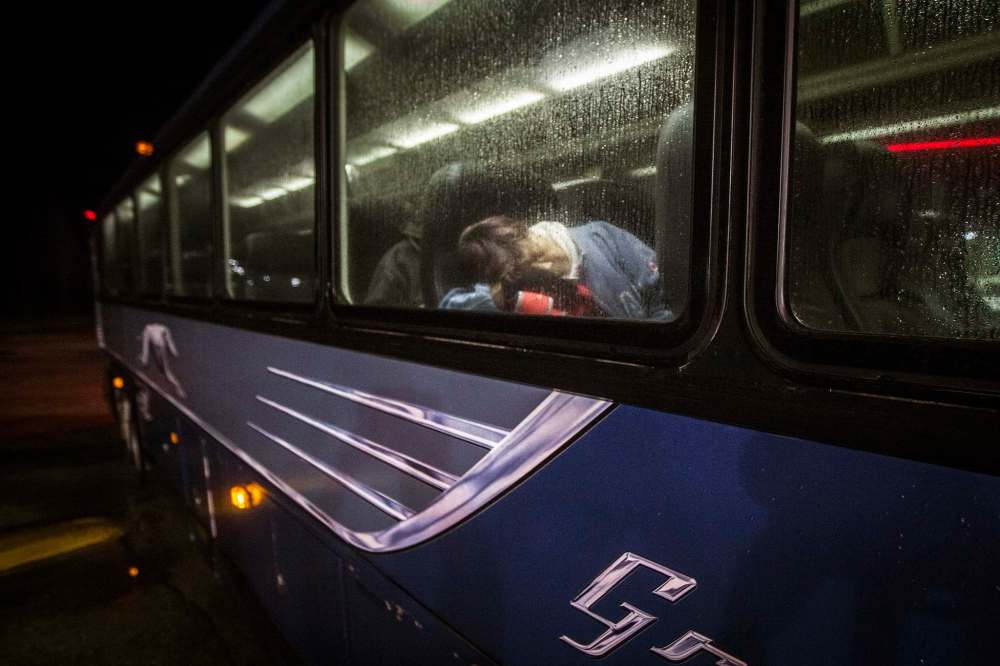
“I’m not saying I’m against it,” Pawlachuk says. “In Northern Manitoba, (intercity) bus service sometimes is more important than southern Manitoba. Just like the railroad, it services a community. There’s nothing else but airlines.”
But the province held firm: no more subsidies. That July, Greyhound slashed a dozen routes. Thompson to Flin Flon was gone; the bus linking Winnipeg and Flin Flon, at that time running twice daily, was cut back to a single night run.
After they cut that route, Stern moved to drive the day run to Thompson. When they cut that route too, he came back to the familiar Flin Flon jaunt. There was no more admiring flora or fauna; nearly the whole trip happened in darkness.
“At nighttime, you’re going down the highway, all you see is yellow lines coming at you,” he says.
In a way, that decision may have hastened Greyhound’s decline. The day bus out of Flin Flon was more popular with passengers; on the night run, the bus stopped at no open businesses until it hit Dauphin, over six hours into the trip.
But the night run was more popular with freight customers, who had all day to get their packages to the depot in time for overnight shipping. So that’s the one that stayed, which made the journey more uncomfortable for some people.
“The bus became pretty hard to ride,” Pawlachuk says. “An 11-hour bus ride at night… if you’re sick, it’s not a good place to be. The money got transferred over to health care, so now they fly people out for medical appointments.”
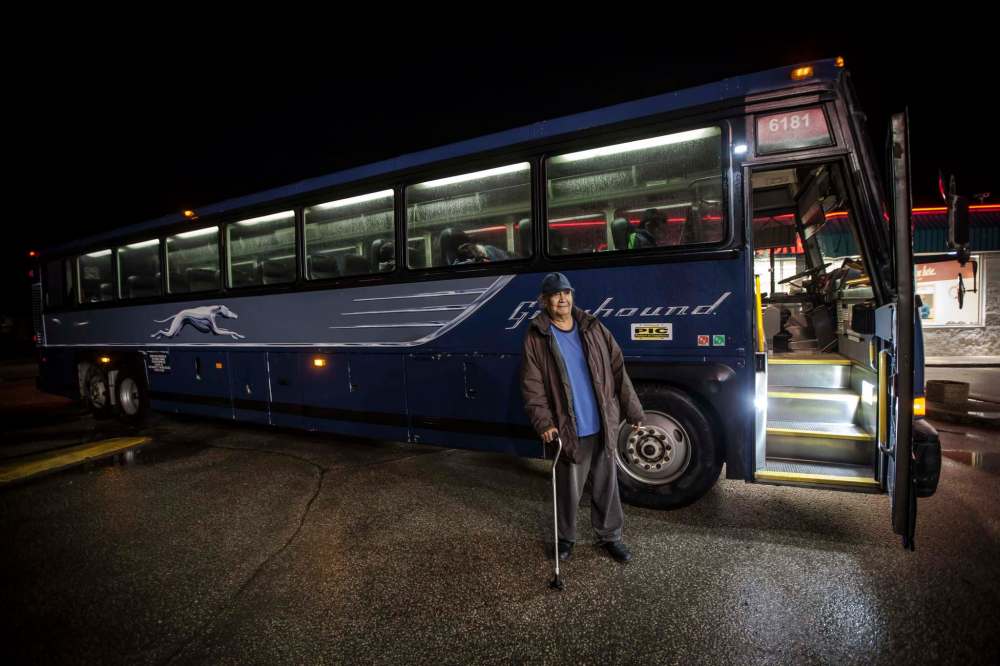
Ridership kept dropping. By this year, the number of drivers in Manitoba had dwindled to about 30. When news of the looming closure came out, many of the younger drivers — ineligible for severance — quit to search for new jobs.
The old-timers stayed, to finish out their service. Many, like Stern, loved their work, and didn’t want to leave it.
For some drivers, there could be new opportunities. Across Western Canada, a patchwork of private services are gearing up to fill some of the gaps left when Greyhound’s network collapsed, taking over spokes on the wheel.
In Thompson, a new bus company is starting up to service the north. Last week, Kelsey Bus Lines, a First Nation-owned charter based out of The Pas, announced it would take over the Flin Flon-Winnipeg route starting this week.
What is not yet clear is how viable these new efforts will be. Even with the benefit of a wider network and deeper pockets, Greyhound lost money on the routes for years. Will smaller operators be able to keep consistent service?
“I think it’s going to be a struggle for them,” Pawlachuk says, wistfully. “It’s not a big money-making thing.”
Time will tell. Still, whether the new operators fail or succeed, there is something about this moment that commands nostalgia. Once, Greyhound built itself on a promise of a brighter, interconnected Canada; now, that dream is gone.

In Flin Flon that night, before the last Greyhound bus pulled away, a cab driver took a pair of journalists to the convenience store drop-off. He’d taken the Greyhound a few times over the years; not from Flin Flon, though.
Still, the driver continued, he was sad to see it go.
“You know, there’s just too many things ending all the time,” he said, and maybe that’s all there is to it.
● ● ●
The bus is your universe, now. The bus is your world. The passengers, citizens of a nomadic, ragtag nation.
Every few hours, you spill out at rest breaks and hover close to the sides of the bus. It’s your lifeboat on this lonely road, the only thing standing between you and what-the-heck-are-you-gonna-do now. So you don’t stray far from it.
Besides, there isn’t really anywhere to go, or much to see. Pavement, gravel, grass. A featureless rural bus depot with corrugated metal siding. Curls of cigarette smoke, wafting in the pools of light made by the bus’s headlamps.
No matter how far you’ve travelled in Canada, or where the bus drifts to a stop, some familiar things remain.
There is always a Tim Hortons, or a gas station with too-bright lights and a refrigerated row of ham-and-cheese sandwiches. There is always a pay phone affixed to a wall. There is always a sense of being alone in the world.
Twenty minutes, the bus driver says. It seems both too long, and not long at all. You make a list of the things you want to do: stretch your legs, breathe air, get a coffee, pee. Once all that is done, you rejoin the other passengers.
For a time, you stand in the dim-lit darkness together, shivering in the cold. A comfortable quiet settles over the huddle, silent except for the hum and purr of the bus’s idle engines. Nothing is said, or needs to be, or could be.
You glance at the scattered faces, familiar after all of this time: two hours, five hours, ten. You never learned their names. You rolled over the vast back reaches of Canada together, but you’ll probably never see each other again.
The driver finishes his coffee and climbs onto the bus. The passengers lingering outside form a ragged line and follow him on, like ducklings dutifully following their mother. They slide back into their seats, one after the other.
As the bus returns to the highway and the lights of the rest stop fall away, you look out the window. The black of the night has softened to a deep, hazy grey. There are more tail lights on the road ahead now than there were before.
In your seat, you smile to yourself, and sink into your coat. The night is ending. You’re going home.
● ● ●
The last legs of Stern’s last trip as a Greyhound driver are uneventful. More passengers, more rest stops, more goodbyes. In Dauphin, a Tim Hortons worker leans over the counter, passes over his order, and chats awhile.
“It’s a bittersweet ending for us,” she tells him. “We’re going to miss the bus drivers.”
The bus rolls on towards Winnipeg, crossing the Perimeter Highway an hour before dawn. Stern guides it down Portage Avenue and turns north towards the airport, where the near-empty Greyhound depot is waiting to receive him.
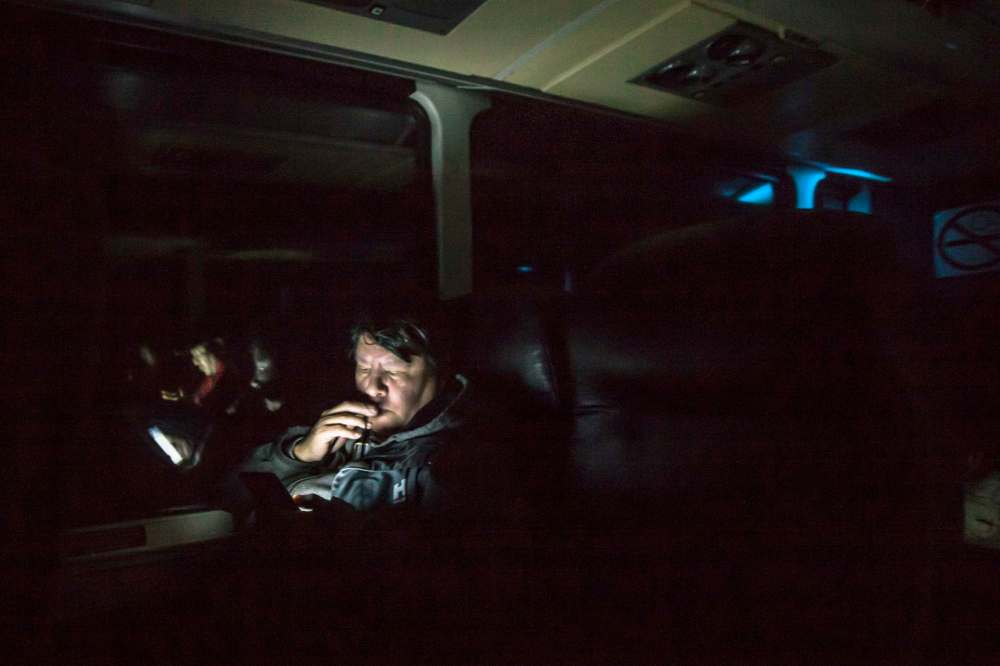
Forty-three years as a Greyhound driver. More than three million miles. And this is the very last one.
“On behalf of the company, our staff and myself, thank you for travelling Greyhound Bus Lines,” he announces.
An hour from now, a trio of Liberal ministers will hold a press conference in Ottawa. They will say the Canadian government understands the significance of the Greyhound cuts, especially for seniors and Indigenous people.
In a press release, the feds say much, but commit nothing. The federal government is “prepared to assist provinces in determining the best path forward,” and it is “open to considering avenues to towards finding effective solutions.”
The Manitoba government will say that it’s interested in hearing a proposal, but won’t help to fund it.
Whatever comes from the federal government’s interest — if anything — it is too late for Greyhound. It is too late for Stern, who made his career moving people through the vast wilds of Manitoba, and still doesn’t feel ready to retire.
He pulls the bus into the station, and puts it into park. Passengers stand up and murmur: in the bay outside, a television news crew is waiting, ready to interview some of the last people ever to ride a Greyhound in Manitoba.

As the passengers file off, Stern stands by the bus door and wishes them farewell. He has one more job left for Greyhound — he will help to move buses from Alberta to Ontario — but this is the last time he’ll fulfill this routine.
“I’ll probably sit in a dark corner at home and mope for about a week,” he says. “But I’ll get over it. I’ll be just fine.”
The cab driver in Flin Flon was right. It seems like too many things are ending — but what ends, and for who, never changes. It’s always the things for which value cannot be counted by money, and always for those who need it most.
melissa.martin@freepress.mb.ca
Our newsroom depends on a growing audience of readers to power our journalism. If you are not a paid reader, please consider becoming a subscriber.
Our newsroom depends on its audience of readers to power our journalism. Thank you for your support.








